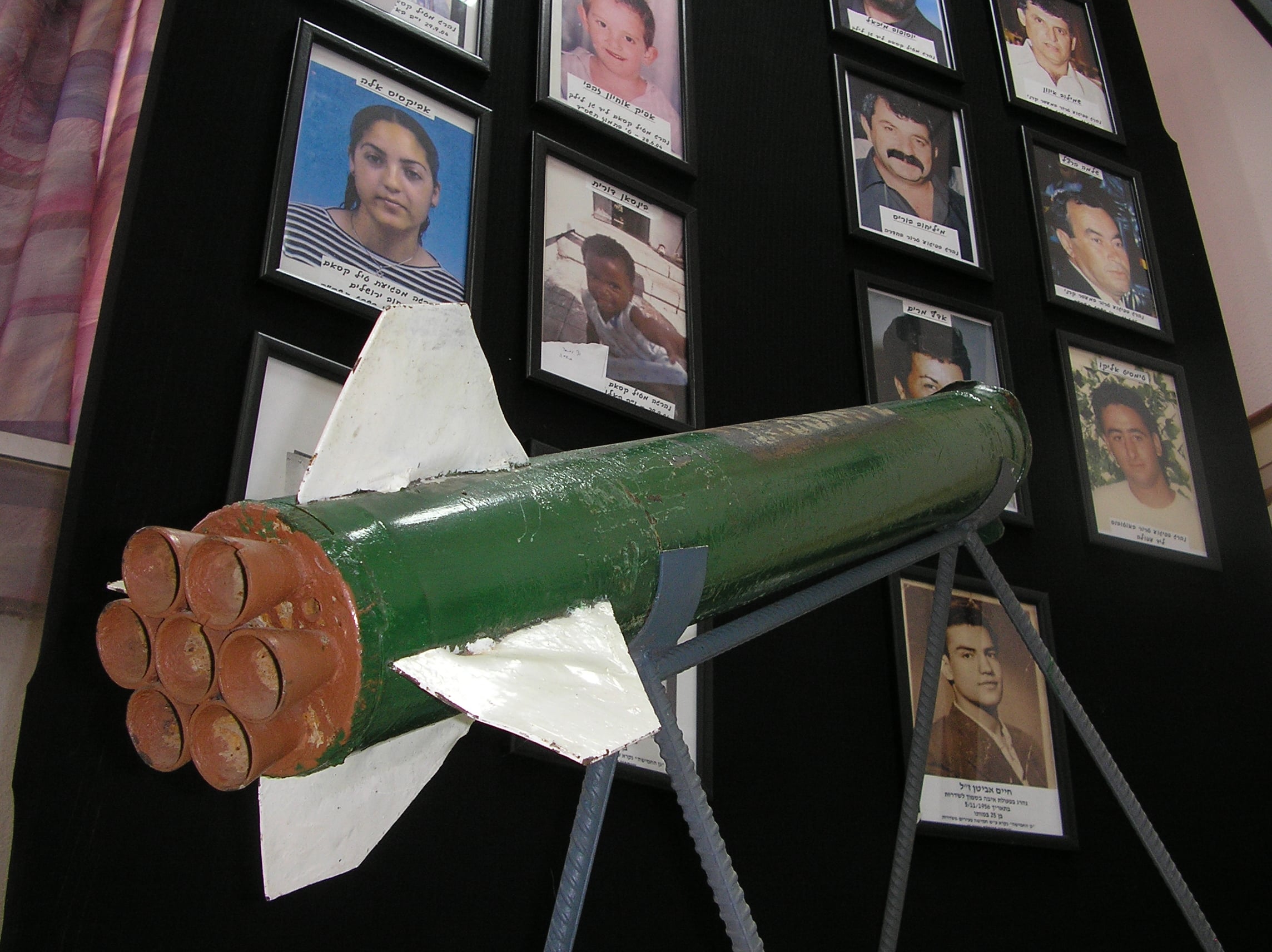Thousands of Israelis have been evacuated from the town of Sderot near the Gaza Strip after a barrage of Qassam rocket fire from Palestinian militants.
“We are afraid. This morning at 7am a Qassam landed three metres from my kitchen, where I was. There was a whistling sound then a huge boom. I fainted. The government has to help us,” said 17-year-old schoolgirl Yamit Da’an as she boarded one of 10 buses taking terrified families from the town on Thursday.
Some 800 residents were evacuated, in addition to 1,600 the previous day who were given hotel rooms in the southern resort of Eilat paid for by an Israeli tycoon.
Sderot mayor Eli Moyal said almost half the town’s 20,000 residents had fled of their own accord after waves of Qassams were launched at the town this week.
Four residents were injured on Tuesday, one seriously, and on Thursday morning a rocket slammed into an empty high school classroom. Sderot’s schools and kindergartens were closed for the second day in a row.
“It’s not a real city now. Half the people have left, although not for good. The economy has collapsed. Sderot doesn’t even belong to the conflict - it is inside Israel’s internationally recognised borders,” said Moyal.
Qassams
Often described as a crude makeshift weapon, the Qassam rocket is a simple homemade steel rocket filled with explosives. Although they are sometimes referred to as missiles, they are free-flight artillery rockets lacking any guidance system.
When a Qassam is fired, Sderot residents have a maximum of 15 seconds in which to take cover before it lands. The Qassams are launched from towns such as Beit Hanoun in the northern Gaza Strip, which is only a kilometre from Sderot.
Some of the town’s schools have been partially covered by huge rocket-proof structures. The youngest children aged up to seven years old are taught directly under the shelter while older children must run into the protected areas in the event of an alarm, Moyal said.
Yossi Timsit’s wife Collette, 45, was seriously wounded on Tuesday evening when the bathroom she was showering in took an almost direct Qassam hit.
“I dragged her out of the shower. She had 18 pieces of shrapnel in her head and her skin was burned black. I couldn’t stop the blood. I didn’t know what to do,” said Timsit, whose house was also hit twice previously in 2001 and 2003.
“The government is doing nothing for us here. If a rocket hit Tel Aviv they would take action immediately but they don’t care about little Sderot.”
“Traumatised”
Local mental health workers have set up a 24-hour emergency centre to treat residents suffering from panic and anxiety attacks, headed by psychiatrist Adriana Katz. The nearest hospital is in Ashkelon, 13km away.
“Fear rules this city every day. The entire population has been traumatised without exception. They suffer post-traumatic stress disorder and depression. We have more than 30 people in here during bombardments and we give them group therapy,” she said.
Some 1,400 Qassams have been fired at Sderot since Israel pulled out of Gaza in 2005 - and more than 3,000 rockets have hit the town since the first in April 2001, killing eight residents , including two children.
The rockets are collected by the town’s police and vary in colour according to the Palestinian militant group that fires them. Hamas fires black ones, Islamic Jihad green ones and the Fatah-affiliated Al Aqsa Martyrs Brigades fire blue ones.
 Photo: Tom Spender/IRIN  |
| Buses organised by Israel's Ministry of Defence to evacuate residents from Sderot, scene of intense rocket fire from the Gaza Strip |
“Unbearable”
“The situation in the last two days is unbearable,” said Israeli Foreign Minister Tzipi Livni in a statement.
And Tzvika Fogel, a reserve brigadier general with the Israeli Defence Force (IDF) Southern Command, told IRIN as many as 200,000 Israelis were now living under the threat of a missile attack from the Gaza Strip.
“It’s not just Qassams - the Palestinians in Gaza now have Katushya missiles and Grad missiles, which have a range of 22km. That means Ashdod, Israel’s fifth largest city and its biggest port, is now within range. Israel cannot live with that,” he said.
shg/cb
This article was produced by IRIN News while it was part of the United Nations Office for the Coordination of Humanitarian Affairs. Please send queries on copyright or liability to the UN. For more information: https://shop.un.org/rights-permissions





